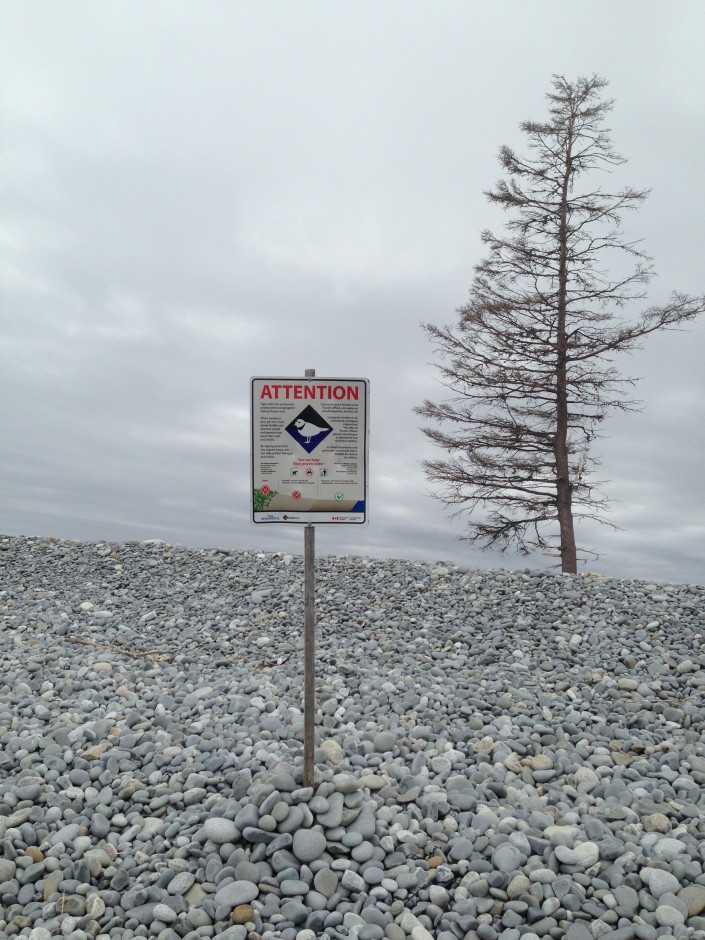Traveling the Flyway in Search of Piping Plovers
CWF BIOLOGIST HEADS NORTH TO CANADA ON CONSERVATION MISSION
By: Todd Pover, Beach Nesting Bird Project Manager

My trip to Canada this past weekend, completed a circle of sorts for me. Over the course of my two decade career studying and protecting Atlantic Coast piping plovers, I have traveled to nearly all of the breeding states in the U.S. More recently, I have expanded my work to their wintering grounds, visiting states in the southeast U.S. and extensively in the Bahamas. But there was one big gap in my piping plover conservation work beyond New Jersey – Atlantic Canada, which, by itself represents an entire recovery unit in the federal recovery plan.
“So you chase plovers around the world,” someone said to me in Canada this weekend. Well, not for the sake of just seeing them in different locations. What I am “chasing” is knowledge and partners. I am seeking information about to how we can improve our breeding program in New Jersey by observing what works (and doesn’t work) in other parts of the range and developing partners to help further conservation across the range.
The story of how I finally ended up in Canada illustrates just how connected piping plover conservation is on an international scale. This past winter, CWF’s Stephanie Egger and I resighted a number of marked piping plovers in the Bahamas. Among those were plovers with engraved flags indicating they bred in Atlantic Canada, marked as part of a long-term research project to try to determine survival, site fidelity, and wintering distribution, among other things. One of the plovers we observed was Grey E4, seen on a small quiet beach on Spanish Wells, Eleuthera. I dutifully reported the band the same evening we observed it and in a few hours the researchers responded it was banded as a chick the previous season in Liverpool, Nova Scotia. When I returned from field work the next day, I had an inquiry about the sighting from a small newspaper back in Nova Scotia, an unusual occurrence, especially so soon after reporting the band. A nice article resulted, a little excitement was generated, and that was the end of story for us on that banded bird.
At least it would normally be the end of the story. Over the course of the next few days and then weeks, I noticed that White Point Beach Resort, the breeding site where “E4” originated from, was frequently posting about the Bahamas resighting and in general about their plovers. After sleeping on it awhile, I finally decided to reach out to them; my curiosity was peeked about what was driving their enthusiasm. What I found out was that they genuinely love their plovers (of course, they do), but they are also interested in marrying conservation and commerce. Instead of it being an adversarial situation as often happens, a fear that having an endangered species would limit activities on their beach, the resort viewed the plovers as “value added” – something their guests would be interested in and maybe even come to the resort to experience.

And they recognized the bands as a way to tell and sell the story. I couldn’t agree more, the bands provide a means to promote piping plover conservation on a personal level through storytelling. Piping plover banding projects are never undertaken lightly; trapping and marking birds involves some risk, and the prime motive for banding always has to be in the name of research to aid management and recovery. But once the birds are marked, we have an opportunity to use them for other purposes as well.

Having instantly bonded over our shared connection to E4, one thing led to another, and we decided to try to partner…in Canada, no less. It started small, but White Point Beach Resort reached out to the local piping plover community and research network, and eventually a whole weekend of activities was planned. May 3 was declared International Piping Plover Day and billed as a day for “banding together to celebrate partnerships.” Working in coordination with Bird Studies Canada, which oversees and implements the piping conservation and research projects in this region, an informative program, including updates on the Canadian banding project and breeding success in Nova Scotia, was presented as part of the weekend.
My role was to tell a little more of E4’s “story” and provide a big picture perspective that included the wintering and migratory portions of the piping plover’s life-cycle. Other highlights for attendees (and me) was a chance to view White Point’s resident pair of piping plovers, including Grey EP, who had just returned to the site to nest once again this year and is the “father” of E4. We even posted and fenced the nesting area of the resort’s beach.
Now that I have completed my travels across the piping plover’s entire Atlantic coast range, I have a flyway scale perspective of the conservation efforts and the challenges we all share. Ironically, the wider my view has become, the more I realize that in the end it comes back to the local view. Conservation works most effectively at the local level, the “stories” connect us on the local level, and we care most passionately about our local piping plovers. Another way of saying Think Globally, Act Locally.
It was an honor to be part of International Piping Plover Day in Nova Scotia this past weekend. I consider it something of a piping plover “diplomatic mission.” A special thanks to Donna Hatt and Wendy Coolen of White Point Beach Resort for organizing and hosting the event and to Sue Abbott of Bird Studies Canada for her coordination, as well as everything she does for piping plover conservation in Atlantic Canada.
Todd Pover is the Beach Nesting Bird Project Manager with Conserve Wildlife Foundation of New Jersey.
Discover more from Conserve Wildlife Foundation of NJ
Subscribe to get the latest posts sent to your email.